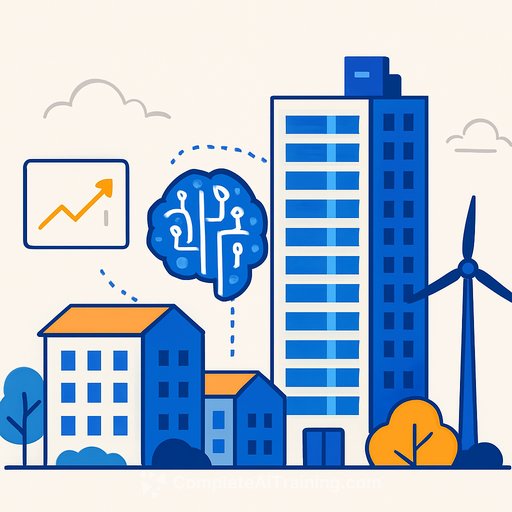Australia's data centres expand amid AI and cloud boom
Australia's data centre pipeline is heating up. The market is projected to grow at roughly 7% CAGR through 2034, moving from about AUD 3.91 billion in 2025 to an estimated AUD 7.18 billion by 2034. For real estate and construction teams, that means sustained demand for sites, energy, and specialist delivery capability.
The construction outlook
Private real estate capital is shifting into data centres as AI becomes standard across products and workflows. Social platforms roll out new features weekly, chat assistants are mainstream, and enterprises are retooling core systems. That activity translates into sustained demand for capacity, low latency, and secure facilities.
With Australia's tech market valued around AUD 167 billion, the ecosystem is large enough to support multi-year development programs and ongoing upgrades. Expect a steady queue of greenfield builds, expansions, and retrofits across major metros.
What's driving demand
- AI: Private AI funding surged in 2024 (the U.S. alone passed USD 100B), and Australia's spending grew 142% since 2021-2022, according to the Australian Bureau of Statistics. Training and inference workloads require dense compute, high availability, and significant electrical capacity.
- Cloud migration: Enterprises continue moving from on-prem to cloud infrastructure. That shift needs secure, high-capacity facilities close to customers and talent.
- IoT: More sensors and smart devices push persistent data flows. Operators need scalable storage, strong connectivity, and efficient cooling to keep up.
Annual data creation keeps climbing. Data centres are the backbone that keeps AI, cloud, and IoT moving.
Why Australia is attracting capital
- Market strength: A sizeable tech sector and steady economic performance improve return profiles and reduce perceived risk.
- Strategic metros: Sydney and Melbourne rank among the top APAC markets, with access to subsea cables for regional connectivity. Perth and other hubs are rising as edge and redundancy options.
- Policy and standards: A transparent, stable regulatory setting that aligns with global data standards supports long-term planning and compliance.
Key operators are scaling. Equinix continues to expand across Sydney, Melbourne, and Perth, and Fujitsu is upgrading its facilities to meet new density and efficiency requirements. Competitive momentum is drawing more investors and lenders into the asset class.
Australian Bureau of Statistics data signals broader adoption of AI across industries, and operator updates from companies like Equinix point to ongoing capacity additions.
Implications for developers, builders, and investors
- Site selection: Prioritise proximity to cable landings and diverse fiber routes, strong grid access, flexible zoning, and minimal flood or bushfire exposure. Validate substation timelines early.
- Energy and sustainability: Secure multi-stage electrical capacity and redundancy. Lock in PPAs or renewable supply strategies, and design for high efficiency (airside economisation, liquid cooling readiness, heat-reuse pathways).
- Cooling and water: Plan for high heat density. Consider liquid-ready halls, rear-door heat exchangers, and recycled water or closed-loop systems to reduce consumption.
- Phased delivery: Use modular design and prefabrication to accelerate first revenue and de-risk schedules. Build for quick turn on additional halls as demand firms.
- Connectivity: Engineer diverse entry points, meet-me rooms, and carrier choice. Low-latency routes to major clouds will be a leasing trigger.
- Compliance and risk: Align designs with global data security standards and local approvals. Bake in monitoring, physical security layers, and incident response from day one.
- Talent and ops: Data centres require specialist commissioning, controls, and ongoing optimisation. Upskill site teams on AI-driven monitoring, capacity planning, and automation. For structured learning, see Complete AI Training.
Outlook to 2034
Demand from AI, cloud, and IoT is set to keep absorption high through the next decade. With a forecast 7% CAGR and expanding operator footprints, construction pipelines should remain active in Sydney, Melbourne, Perth, and secondary markets.
Expect more foreign investment, new joint ventures, and a premium on sites with clear energy pathways and strong connectivity. Teams that can deliver dense, efficient, and scalable facilities on accelerated timelines will win leases-and repeat business.
For investors and builders, the play is simple: secure well-located sites, lock in energy and fiber, design for density, and phase delivery. Those who move early and execute with discipline will capture the next wave of demand.
Your membership also unlocks:






